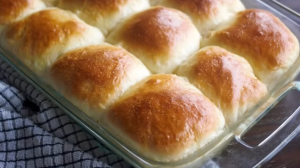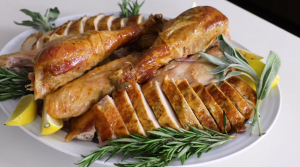Imagine combining the sweet, rich flavor of butternut squash with the creamy, savory goodness of lasagna. This butternut squash lasagna recipe does just that, creating a gourmet dish that's both comforting and sophisticated. The sweetness of the squash pairs perfectly with the rich béchamel sauce, and the layers of lasagna noodles make every bite satisfying. This is a wonderful dish to make for dinner parties, or just for a cozy weeknight meal.
The primary ingredient that might not be a regular in your pantry is the butternut squash. It's a type of winter squash that has a sweet, nutty taste similar to pumpkin. It's large in size and has a distinct bell shape. Another key ingredient is béchamel sauce, made from butter, flour, and milk, it's a white sauce used as a base in many dishes. Lastly, you might need to pick up Fontina cheese, a mild and slightly nutty Italian cheese that melts beautifully.
Ingredients for Butternut Squash Lasagna
Butternut squash: It's sweet, flavorful, and hearty, making it perfect for a filling main dish.
Olive oil: Used for roasting the squash, it brings out its natural sweetness.
Milk: Used in the béchamel sauce, it adds creaminess and richness to the lasagna.
Unsalted butter: A key ingredient in béchamel sauce, it adds a rich, buttery flavor.
All purpose flour: It's used to thicken the béchamel sauce.
Parmesan: Adds a sharp, salty flavor that balances the sweetness of the squash.
Lasagna noodles: They form the structure of the lasagna, holding all the fillings.
Whole milk ricotta: Adds creaminess and a subtle, fresh flavor to the lasagna.
Egg: It helps bind the ricotta filling, giving it structure.
Fontina: It's slightly creamy and nutty, perfect for melting in lasagna.
Fresh parsley: It adds a fresh, herbaceous note to the dish.
Lemon zest: It gives a bright, citrusy note that balances the rich flavors.
Fresh baby spinach leaves: They add a layer of fresh, earthy flavor.
One reader, Aubrette John says:





This butternut squash lasagna recipe is a game-changer! The flavors are rich and comforting, and the layers of squash and creamy béchamel are simply divine. It's a perfect dish for a cozy family dinner or a special occasion. I highly recommend trying it out!
Key Techniques for Crafting the Perfect Butternut Squash Lasagna
How to roast the squash: Preheat the oven to 450ºF. Line 2 baking sheets with parchment. Lay the squash slices on the baking sheet, brush with olive oil, sprinkle with salt and pepper, and bake for 18 to 25 minutes, or until tender.
How to steep the milk for the béchamel: Heat the milk and sage leaves in a microwave-safe measuring cup for 4 to 5 minutes in the microwave, or until it bubbles at the edges but does not boil. Alternatively, heat in a saucepan on the stovetop. Turn off the heat once it bubbles a little bit and leave the sage leaves to steep in the milk for 20 minutes.
How to cook the lasagna noodles: Bring a large pot of salted water to a boil. Cook the noodles according to the package instructions, about 8 minutes. Once cooked, cool the noodles by filling the pot with cold water and then lifting each noodle out of the pot one by one and setting it on a kitchen towel.
How to make the béchamel: Melt the butter in a medium saucepan over medium heat. Whisk in the flour and cook, stirring constantly, for about 1 minute, or until the mixture is uniformly bubbly. Gradually whisk in the hot milk, bring the sauce to a low boil, and cook for 3 to 4 minutes longer, or until the sauce thickens enough to coat the back of a wooden spoon. Remove and discard the sage leaves, then stir in the parmesan, salt, and pepper.
How to assemble the lasagna: Spoon about 1/4 cup of béchamel in a thin layer over the bottom of a 9x13 baking dish. Layer the noodles, béchamel, spinach, squash, and filling in the specified order, finishing with a layer of noodles topped with the remaining béchamel. Sprinkle with parmesan and fontina.
How to bake the lasagna: Bake for 50 to 60 minutes at 375ºF, or until golden brown and bubbly.
How to cool and serve: Let the lasagna rest and settle for 15 to 20 minutes before slicing into serving pieces.
How To Make Butternut Squash Lasagna
Vegetarian lasagna? Not impossible with this butternut squash lasagna recipe. Pile on those noodles, squash, spinach, and an abundance of rich cheese.
Serves:
Ingredients
For the Squash:
- 2butternut squash,about 2 pounds each
- 2tbspolive oil
- ¼tspsalt
- ⅛tsppepper
For the Béchamel (White Sauce):
- 5cupsmilk,whole milk or 2 percent
- 6whole sage leaves
- 6tbspunsalted butter
- 8tbspall purpose flour
- ¾cupparmesan,grated
- ¼tspsalt
- ⅛tsppepper
For the Noodles Filling:
- 16dry lasagna noodles
- 2cupswhole milk ricotta
- 1large egg
- ¾cupparmesan,grated
- ½cupfontina,grated
- 3tbspfresh parsley,chopped
- ½zest of lemon,finely grated
- ¼tspsalt
- pinchblack pepper
For Assembling the Lasagna:
- 5ozfresh baby spinach leaves,packed, cups
- 1cupparmesan,grated
- 1cupfontina,grated
Instructions
-
Prep the squash: Peel the squashes with a vegetable peeler. Cut them in half lengthwise and scoop out the seeds. Then cut crosswise into 1/4-inch thick slices. (See How to Peel and Cut a Butternut Squash)
-
Roast the squash: Preheat the oven to 450ºF. Line 2 baking sheets with parchment. Lay the slices on the baking sheet and brush with the olive oil. Sprinkle with salt and pepper. Bake for 18 to 25 minutes, or until tender.
-
Steep the milk for the béchamel: In a microwave-safe measuring cup with a spout, heat the milk and sage leaves for 4 to 5 minutes in the microwave, or until it bubbles at the edges but does not boil. (Alternatively, heat in a saucepan on top of the stove.) Turn off the heat once it bubbles a little bit on the stovetop. Leave the sage leaves to steep in the milk for 20 minutes.
-
the milk steeps, cook the lasagna noodles: Bring a large (6-quart) pot of salted water to a boil. Cook the noodles according to the package instructions, about 8 minutes. Hold the pot over the sink and pour off the hot water. Fill the pot of noodles with cold water, running the water until the water in the pot is cool. Cover the noodles with cold water to stop the noodles from cooking and to remove some of the starch. Lift each noodle out of the pot one by one and set it on a kitchen towel. Don’t worry if the noodles stick together a bit, or if one of them tears slightly. They will be covered with other ingredients and no one will be the wiser.
-
Make the béchamel: In a medium saucepan over medium heat, melt the butter for the bechamel. Whisk in the flour and cook, stirring constantly, for about 1 minute, or until the mixture is uniformly bubbly. Do not let the flour brown. Take the pan off the heat. Leaving the sage leaves in the milk for now, gradually whisk about 1 cup of the hot milk into the butter and flour, whisking until smooth. Gradually whisk in the remaining milk until smooth and return the pan to medium heat. Bring the sauce to a low boil, whisking slowly but constantly. Adjust the heat to a simmer, and whisking constantly, cook for 3 to 4 minutes longer, or until the sauce thickens enough to coat the back of a wooden spoon. Remove the pan from the heat and remove and discard the sage leaves. Stir in the Parmesan, salt and pepper. Taste and add more salt and pepper if you like.
-
Make the lasagna filling: In a bowl, stir together the ricotta, egg, Parmesan, fontina, parsley, lemon zest, salt, and pepper.
-
Assemble the lasagna: Decrease the oven temperature to 375ºF. Spoon about 1/4 cup of béchamel in a thin layer over the bottom of a 9×13 baking dish. Spread 4 noodles lengthwise over the sauce and cover them with 1/4 of the remaining béchamel. Spread 1/3 of the spinach leaves on top. Top with 1/3 of the squash slices. Use heaping tablespoons to dollop 1/3 of the filling on top of the squash. Repeat the layers 2 more times for a total of 3 layers in the same order: noodles, béchamel, spinach, squash and filling, finishing with a fourth layer of noodles topped with the remaining béchamel. Sprinkle with the Parmesan and fontina.
-
Bake the lasagna: Bake for 50 to 60 minutes, or until golden brown and bubbly.
-
Cool and serve: Let the lasagna rest and settle for 15 to 20 minutes before slicing into serving pieces. Leftovers keep, covered, in the refrigerator for at least 4 days.
Nutrition
- Calories: 543.86kcal
- Fat: 30.85g
- Saturated Fat: 17.81g
- Trans Fat: 0.23g
- Monounsaturated Fat: 9.44g
- Polyunsaturated Fat: 1.56g
- Carbohydrates: 39.56g
- Fiber: 3.35g
- Sugar: 8.35g
- Protein: 28.59g
- Cholesterol: 102.22mg
- Sodium: 771.30mg
- Calcium: 734.18mg
- Potassium: 666.88mg
- Iron: 2.32mg
- Vitamin A: 763.31µg
- Vitamin C: 23.53mg
Pro Tip: Elevate Your Butternut Squash Lasagna with This Technique
When preparing the butternut squash, make sure to cut it into even slices. This ensures that all pieces will cook uniformly in the oven. Additionally, when making the béchamel sauce, whisk the mixture constantly to prevent lumps from forming. This will result in a smoother, creamier sauce that will enhance the overall texture and flavor of your lasagna.
Time-Saving Tips for Preparing Butternut Squash Lasagna
Prep the Squash: Use a sharp vegetable peeler to quickly peel the butternut squash. Then, cut the squash into slices of uniform thickness for even roasting.
Multi-task: While the squash is roasting, you can prepare the béchamel sauce and lasagna filling to save time.
Make-ahead: Prepare the butternut squash, béchamel sauce, and lasagna filling a day in advance to streamline the assembly process when you're ready to bake the lasagna.
Assembly line: Set up an assembly line with all the components ready to go, making it easier and quicker to layer the lasagna.
Pre-boil noodles: Consider using no-boil lasagna noodles to save time and eliminate the step of boiling them beforehand.
Prep in bulk: Roast extra butternut squash and freeze it for future use in other recipes to save time on prep work later.
Use store-bought: If you're short on time, consider using store-bought butternut squash puree instead of roasting and pureeing the squash yourself.
Efficient slicing: Use a mandoline slicer to quickly and uniformly slice the butternut squash for the lasagna layers.
Organized workspace: Keep your workspace organized and clean as you work through the recipe to avoid unnecessary time spent searching for ingredients or tools.
Substitute Ingredients For Butternut Squash Lasagna Recipe
butternut squash - Substitute with pumpkin: Both butternut squash and pumpkin have a similar sweet and nutty flavor, and they both have a creamy texture when cooked, making pumpkin a suitable substitute for butternut squash in this recipe.
ricotta - Substitute with cottage cheese: Cottage cheese has a similar creamy texture and mild flavor to ricotta, making it a suitable substitute in the lasagna filling. It also adds a slightly tangy flavor, which can complement the other ingredients well.
fontina - Substitute with Gruyère: Gruyère cheese has a rich and nutty flavor similar to fontina, and it melts beautifully, making it a great substitute for adding depth of flavor to the lasagna.
sage leaves - Substitute with thyme: Thyme has a slightly earthy and floral flavor that can replace the aromatic quality of sage in the béchamel sauce, adding a different but complementary herbal note to the dish.
lasagna noodles - Substitute with zucchini slices: Thinly sliced zucchini can be used as a low-carb and gluten-free alternative to lasagna noodles, providing a lighter and vegetable-based layer for the lasagna.
Presentation Tips for a Delightful Butternut Squash Lasagna
Elevate the plating: Carefully layer the lasagna in a circular mold to create a stunning presentation. Use a spatula to carefully lift each portion onto the plate for a clean and elegant look.
Garnish with fresh herbs: Sprinkle finely chopped parsley and thyme over the top of the lasagna for a pop of color and a burst of fresh flavor.
Incorporate edible flowers: Place a few delicate edible flowers such as nasturtiums or pansies on top of the lasagna for a touch of elegance and a hint of floral aroma.
Add a drizzle of balsamic reduction: Create a beautiful design on the plate with a balsamic reduction to add a touch of sweetness and acidity to complement the savory flavors of the lasagna.
Serve with a side salad: Accompany the lasagna with a small arugula and radicchio salad dressed in a light vinaigrette to provide a refreshing contrast to the rich dish.
Use fine dining plating techniques: Employ techniques such as quenelles and precise sauce drizzling to showcase the attention to detail and culinary expertise in the presentation of the dish.
Incorporate microgreens: Sprinkle a few delicate microgreens over the top of the lasagna to add a subtle hint of earthy freshness and a visually appealing touch.
Utilize elegant serving ware: Present the lasagna on a beautiful ceramic platter or individual porcelain plates to enhance the visual appeal and elevate the dining experience.
Essential Kitchen Tools for Making Butternut Squash Lasagna
- Vegetable peeler: A vegetable peeler is used to peel the butternut squash, removing the outer skin efficiently.
- Baking sheet: Baking sheets are used to roast the butternut squash in the oven, providing a flat surface for even cooking.
- Microwave-safe measuring cup: This is used to heat the milk and steep the sage leaves for the béchamel sauce in the microwave.
- Saucepan: A saucepan is used to heat the milk and steep the sage leaves for the béchamel sauce on the stovetop.
- Whisk: A whisk is used to mix the ingredients for the béchamel sauce, ensuring a smooth and creamy texture.
- Wooden spoon: A wooden spoon is used to stir the béchamel sauce while it thickens, preventing it from sticking to the pan.
- Medium saucepan: This is used to make the béchamel sauce, providing a suitable size for heating and thickening the sauce.
- Bowl: A mixing bowl is used to combine the ingredients for the lasagna filling, ensuring even distribution of flavors.
- 9x13 Baking dish: A 9x13 baking dish is used to assemble and bake the lasagna, providing the right size for layering the ingredients.
- Oven: The oven is used to bake the assembled lasagna, cooking it to golden brown perfection.
Storing and Freezing Butternut Squash Lasagna for Later Enjoyment
To store leftover butternut squash lasagna, allow it to cool completely to room temperature. Cover the baking dish tightly with plastic wrap or aluminum foil, or transfer the lasagna to an airtight container. Refrigerate for up to 4-5 days.
For longer storage, you can freeze the lasagna. Wrap the cooled lasagna tightly in plastic wrap, then in aluminum foil. Label the package with the date and contents. Freeze for up to 2-3 months for best quality.
To freeze individual portions, cut the cooled lasagna into serving-sized pieces and wrap each piece tightly in plastic wrap, then in aluminum foil. Place the wrapped pieces in a freezer-safe container or freezer bag. Label the package with the date and contents. Freeze for up to 2-3 months.
To reheat refrigerated lasagna, preheat the oven to 350°F (175°C). Remove any plastic wrap and cover the dish with foil. Bake for 30-45 minutes, or until heated through. Remove the foil for the last 5-10 minutes of baking to crisp up the top, if desired.
To reheat frozen lasagna, thaw it overnight in the refrigerator. Then, follow the reheating instructions for refrigerated lasagna. If baking directly from frozen, increase the baking time to 45-60 minutes, or until heated through.
If reheating individual frozen portions, thaw them overnight in the refrigerator or microwave them on 50% power for 2-3 minutes, then on high for 1-2 minutes, or until heated through. For a crispy top, place the thawed or microwaved portion under the broiler for a few minutes.
How to Reheat Butternut Squash Lasagna for Optimal Taste
Preheat your oven to 350°F (175°C). Place the leftover lasagna in an oven-safe dish and cover it with aluminum foil. This will help prevent the top layer from drying out and burning while the inside heats through. Bake for about 30-40 minutes, or until the lasagna is heated through and the cheese is melted and bubbly.
If you prefer a crispier top layer, remove the foil for the last 10 minutes of baking. This will allow the cheese to brown and create a delightful texture contrast with the soft, creamy layers beneath.
For a quicker reheating method, you can use the microwave. Place a single serving of lasagna on a microwave-safe plate and heat it on high power for 1-2 minutes, or until it's heated through. Be careful not to overheat it, as this can cause the cheese to become rubbery and the noodles to turn soggy.
If you have a toaster oven, you can use it to reheat smaller portions of lasagna. Preheat the toaster oven to 350°F (175°C) and place a slice of lasagna on a toaster oven-safe dish. Heat for about 10-15 minutes, or until the lasagna is heated through and the cheese is melted and bubbly.
For a stovetop method, place a slice of lasagna in a non-stick skillet over medium-low heat. Cover the skillet with a lid and heat for about 5-7 minutes, or until the lasagna is heated through and the cheese is melted. This method works best for individual portions and helps to create a slightly crispy bottom layer.
Regardless of the reheating method you choose, be sure to let the lasagna cool for a few minutes before serving to avoid burning your mouth on the hot cheese and sauce. Enjoy your delicious, reheated butternut squash lasagna with a side salad or your favorite steamed vegetables for a satisfying and comforting meal.
Interesting Trivia About Butternut Squash Lasagna
The butternut squash lasagna recipe is a great source of vitamin A, which is essential for maintaining healthy vision and a strong immune system. Butternut squash is also rich in fiber, potassium, and antioxidants, making it a nutritious addition to your diet. So, indulging in this delicious lasagna not only satisfies your taste buds but also provides a healthy dose of essential nutrients.
Budget-Friendly: Is Butternut Squash Lasagna Cost-Effective?
The cost-effectiveness of this butternut squash lasagna recipe is quite favorable. Butternut squash is a budget-friendly ingredient, and the recipe utilizes common pantry staples. The overall verdict rating for this dish is 9/10, considering the nutritional value, flavor, and versatility. The approximate cost for a household of 4 people is around $25, making it an economical and satisfying meal option.
Is Butternut Squash Lasagna Healthy?
The butternut squash lasagna recipe has both healthy and unhealthy aspects. On the positive side:
- Butternut squash is a nutritious ingredient, rich in vitamins A and C, fiber, and antioxidants
- The recipe includes spinach, another nutrient-dense vegetable
- Using whole milk ricotta and fontina cheese provides some protein and calcium
However, there are also some less healthy components:
- The béchamel sauce is made with a significant amount of butter and whole milk, which adds saturated fat and calories
- The recipe calls for a substantial amount of cheese, further increasing the saturated fat and sodium content
- White lasagna noodles are made from refined flour, which lacks the fiber and nutrients of whole grain alternatives
To make this recipe healthier, you could try the following modifications:
- Replace some of the butter in the béchamel with olive oil or a lighter alternative
- Use low-fat milk instead of whole milk for the sauce and ricotta mixture
- Increase the amount of vegetables, such as adding sautéed mushrooms or zucchini layers
- Opt for whole wheat or vegetable-based lasagna noodles for added fiber and nutrients
- Reduce the amount of cheese used, or choose lower-fat varieties
- Serve the lasagna with a side salad to boost the overall vegetable content of the meal
By making these adjustments, you can create a more balanced and nutritious version of this comforting dish while still maintaining its delicious flavor profile. Experiment with different modifications to find the perfect balance that suits your taste preferences and dietary needs.
Editor's Take: Why Butternut Squash Lasagna is a Must-Try
The butternut squash lasagna recipe is a delightful blend of flavors and textures. The roasted squash adds a sweet and nutty essence, while the creamy béchamel and cheese create a luscious and indulgent layer. The use of fresh spinach adds a pop of color and a hint of earthiness, balancing the richness of the dish. The recipe's detailed instructions ensure a successful outcome, making it accessible for both novice and experienced cooks. Overall, this dish is a comforting and elegant twist on traditional lasagna, perfect for a cozy family dinner or a special gathering.
Enhance Your Butternut Squash Lasagna Recipe with These Unique Side Dishes:
Delicious Alternatives to Butternut Squash Lasagna
Appetizer and Dessert Ideas to Complement Your Butternut Squash Lasagna
Why trust this Butternut Squash Lasagna Recipe:
This butternut squash lasagna recipe is a delightful twist on the classic dish. The use of fresh butternut squash adds a rich, sweet flavor, while the creamy béchamel sauce and flavorful cheeses create a luscious texture. The inclusion of fresh spinach adds a nutritious element, and the aromatic sage infuses the dish with a warm, earthy essence. With carefully detailed instructions, this recipe ensures a successful outcome, making it a trustworthy choice for a comforting and satisfying meal.
Was this page helpful?
Have your own special recipe to share? Submit Your Recipe Today!













